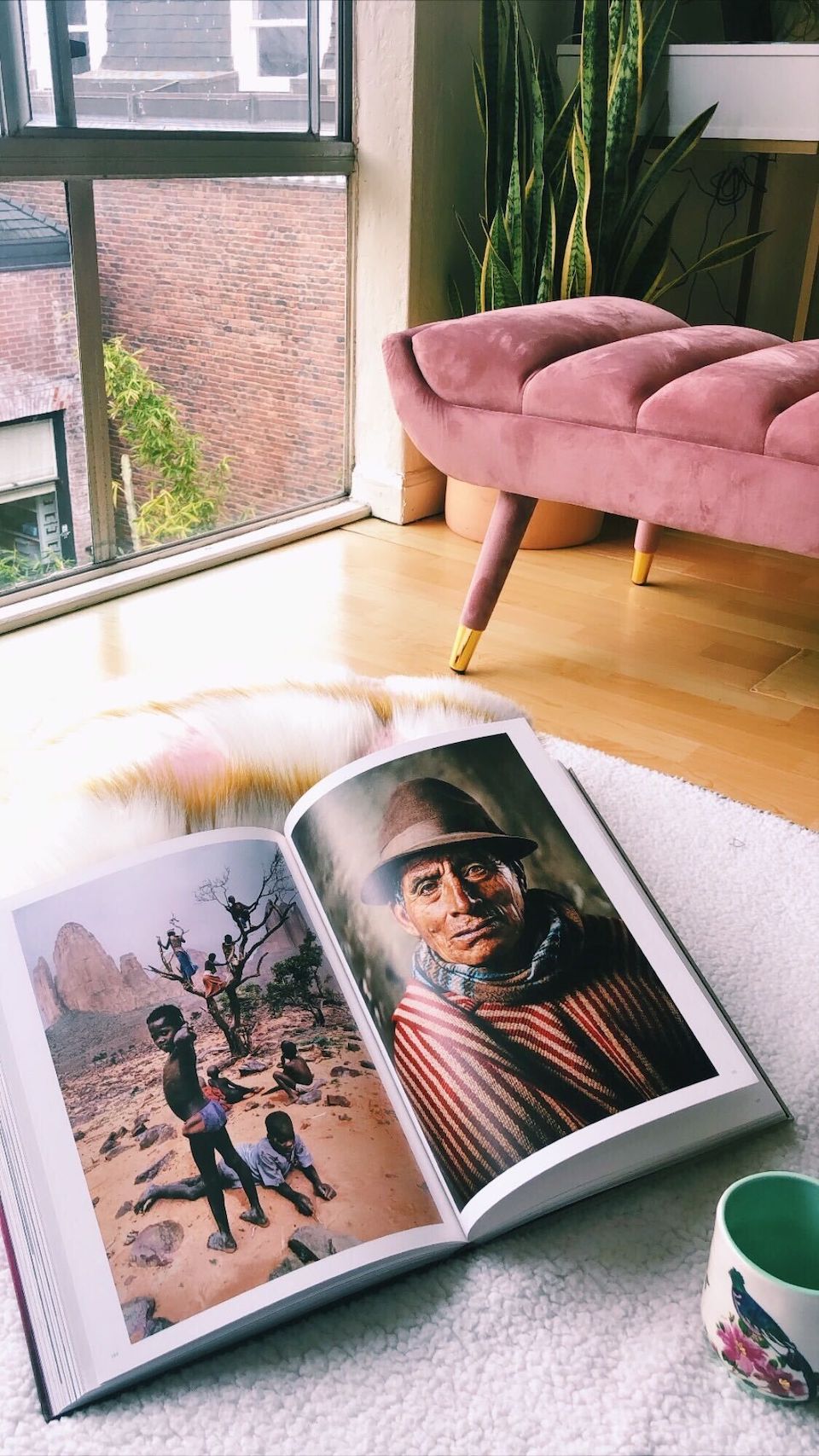
Extroverts in isolation: The inside story on outgoing people
Published on June 18, 2020
For some, working from home is ideal. Introverts who live alone may welcome the chance to escape the obligations of office life. Home is a quiet oasis where they can focus on getting things done. For people who thrive on social interaction, though, it’s more like a desert island.
Since the pandemic forced us all into our separate spaces, I’ve been wondering about extroverts. I’ve admired and marveled at their ability to hold the attention of a crowd, whether it’s during a presentation at work or on stage at a concert. But what happens when that superpower gets taken away?
Musicians and comedians are already talking about their struggles adapting to life without a live audience. But you don’t have to be an entertainer to miss interacting in crowds—especially if one of the strongest parts of your personality is your charm, charisma, or sense of humor.
I have a few friends who fit that description, and right now, I’m kind of worried about them. I mean, I know they’re not hanging out at home with cardboard cutout crowds, but I had to find out how they’re coping with the sudden shift to quiet isolation. Here’s what they had to say.
Covering more territory from home
When your livelihood depends on meeting people face to face, do the constraints of sheltering in place keep you from serving clients and closing deals?
As the Business Development Director at CCL Industries—a label, packaging, and manufacturing company based in Sonoma, California—Leah Jones was used to spending most of her time traveling to visit clients in cities all over the west coast. And when she wasn’t on the road, she was happy to be in the office.
“I'm finding there are other extroverts out there that are more than happy to get on a video call and talk about business."—Leah Jones
“I thrive on inspiring other people on my team,” she says. “I spend a majority of my time in an office because I love the interaction. I feed off of that.”
Before the pandemic, she was spending about half her time with customers and half following up with her team. Now she’s working out of her home office about 70% of the time, and making no customer visits. When she needs to send out proposals and samples, she still occasionally needs to go into the office, but takes precautions with PPE.
“For all of us, we're wearing masks,” says Jones. “There's no discussion about us not wearing masks or not keeping social distance.”
That’s not the only new habit she’s adopted. Where her normal go-to way to reach out to customers was the phone, now she relies more on FaceTime and Zoom. “I'm finding there are other extroverts out there to have conversations with that are more than happy to get on a video call and talk about business and what we need to do,” says Jones. “So that’s substituted for in-person meetings I would normally have made.”
She’s also finding that this lets her connect with people she hadn’t met yet. “I might be their rep, but they may be in New Zealand and it doesn't occur to us to get on a conference call,” she explains. “Now it seems like people are isolated. So they're more open to getting on a video conference with their sales representatives. They're lonely, I think, and looking for people to talk to. It’s nice to be more well received as a salesperson.”
Jones says she’s discovered other advantages to being on all those video calls. “I'm in a very visual job because we have label samples. On Zoom, I can see what they're talking about. They can share their screen on new designs. So it's very practical for us. And I think I'm getting more coverage having Zoom meetings than I did when I was driving around. My customers aren't just sitting in Sonoma. They're in Oregon, Washington, and on the central coast of California. It takes a lot to get to any of these places.”
“We're getting our work done in spite of not being in person,” she says. “I developed new patterns, having a meeting every Friday. The clients and I discussed that we're having so much fun on Zoom, that when COVID is over, we're gonna keep up our Zoom meetings together.”
Her clients have already suggested that the stay at home order is showing how productive they can be—and they’re making new plans about how often people can work remotely. “I've heard from three different clients so far that this is going to change how they do business in the future, even if they're allowed to go back in offices.”
Moving from stage to screen
A concert promoter without a crowd is kind of like an astronaut without a rocket. Sure, there’s work you can do while you’re waiting for takeoff, but it doesn’t feel like you’re getting anywhere.
KC Turner is a friend of mine who books, promotes, and presents live music in venues all over the San Francisco Bay Area. When the shelter in place orders were first announced, he’d already booked most of his 2020 shows. In a matter of weeks, he lost an entire year’s worth of work.
“No one understood the magnitude at first,” says Turner. “I remember that first weekend, around St. Patty's Day, I had a few shows planned and we were still thinking about doing them. Then it became more apparent: this is really serious.”
This isn’t the first time he’s had to deal with disruption. Last year, wildfires and widespread power outages causes several show cancellations.
“With the fires, it was very unique to our market,” says Turner. “Whereas, this is worldwide. It’s the entire industry. I've talked to booking agents and talent buyers from all over the country. We're all sharing the exact same story. It really reminds me that I'm not alone in this one.”
"The big payoff for me was always seeing that connection and the energy in a room and being part of something special. It's crushing to not be part of that right now.”—KC Turner
Turner says the hardest part hasn’t been the lack of income, but the loss of community.
“I feel like what I do is who I am,” he says. “The big payoff for me was always seeing that connection and the energy in a room and being part of something special. The moment you see fans and artists connect in a space I've curated means so much to me. It's crushing to not be part of that right now.”
“Some days, I get really down about it. That's when I'll pick up the phone and talk to other colleagues, not just artists but agents and managers and people that do this for living.”
Recently, Turner shifted gears from presenting live concerts to hosting Facebook Live and Instagram Live interviews with many of the artists he’s presented over the the years, including G. Love, Birds of Chicago, Megan Slankard, and Glen Phillips of Toad the Wet Sprocket.
“I'd never anticipated trying to do a podcast,” says Turner. “It's been fun because I get to put something on my calendar that I know I'm not going to cancel, then I can tell people about, which is a big part of what I love.”
Producing the Talk to Me shows has been an unexpected boon in terms of acquiring new skills.
“I learned very quickly how to interview,” he says. “After the first one, I put a reminder on my notes every time. It simply says ‘Talk less.’”
Turner says he’s still figuring out how to adapt his communication style to the new medium. Something as simple as eye contact takes more effort when the “eyes” of your audience aren’t the eyes of the person on your screen.
“When they're talking, it looks like I'm looking down, but I'm looking at their face,” he explains. “So I try to remember to look at the green dot when I ask a question or talk in response to something. Because as a viewer, it's like they're talking to you. There are some weird social cues that get missed.”
Though a lot of his artists have turned to online performances to fill the gap until they can tour again, Turner says virtual concerts can’t replace the real thing for him.
“At times, I do feel exhilarated by watching an online performance, but there is no substitute for being there. I still process [this change] with all my friends. They're all utilizing this downtime to self reflect and take some personal time. I do need to unplug and just step away from it all. But it doesn't take very much time to realize I love what I do. I miss it like crazy.”
Navigating a new trip into the unknown
Quynh-Le Nguyen is a photojournalist and Social Media Manager at Dropbox who’s spent a lot of her life traveling the world, exploring different cultures, and capturing beautiful images of them with her camera.





“I’m treating this quarantine as another trip into an unknown, secluded foreign place that’s off the beaten track."—Quynh-Le Nguyen
Even though she describes herself as as an extreme extrovert, she says she travels solo 99% of the time. So she’s trying to tap into her independent streak as she adapts to the solitude of sheltering in place.
“I’m treating this quarantine as another trip into an unknown, secluded foreign place that’s off the beaten track,” she says. “I make it my goal to create new adventures every day and try things that either challenge me or make me happy—like getting back into running or just re-kindling my love of pencil coloring scenic places that I’d like to explore as a child.
Despite the circumstances of the pandemic, she says she feels optimistic most of the time.
“I like to look for one positive thing because with every challenge, there’s always a silver lining. For quarantine, I view it as another opportunity to be creative with how to navigate my time and experiences. I know I’m blessed to be in a place to feel this way so I can try to live in a state of gratitude and possibility.”
“As an extrovert, I’m always on the go and busy with work, life, and everything in-between,” she says. “I’m constantly pulled in different directions. The toughest part of lockdown for me has been learning to slow down.”
To help clear her mind, she takes a daily stroll to discover different parts of her neighborhood. “It’s these mini escapades that make shelter-in-place more ‘exciting.’ I’ve been loving just traveling into my own mind and thoughts.”
Trying to read the room on Zoom
Paul Boutin is a marketing and advertising writer who works with tech companies. Despite being someone who thrives on the chatty interactions of office culture, he’s spent a majority of the past 12 years as a remote worker. Unlike a lot of WFH veterans, it’s not his preferred way of working.
“I like offices,” he says. “I've worked in offices where it's a wonderful stimulus to be surrounded by people who are smart, creative, and driven. I loved being in the office at WIRED magazine where a few of us would be having a conversation about some big concept. Kevin Kelly would look over and go, ‘Actually… ‘ and you knew it was gonna be good. Even when I was a programmer, having the other programmer look over at me and say something blunt and funny about my code, I never would’ve got that in a formal text-based field feedback mechanism. They felt free to joke. They felt free to tell me how they really felt because I'm sitting right there.”
“People often presume that someone who talks a lot is an extrovert... It’s about, does the person get their energy from interacting with people?”—Paul Boutin
When he started working from home, the dynamic was different. He noticed being more energetically motivated to do things for clients when he got to interact with them in real time instead of getting an email from someone whose face he’d never seen. Video conferencing may bring freelancers and full timers face to face now, but for an extrovert like Boutin, there’s still something missing from the interaction.
There are three things that make virtual meetings more challenging, says Boutin. “First, you're missing a lot of body language. Second, you miss reading the room, watching other people not just look at you through the camera, but watching them look at each other. We've all been in that situation where we've said something in a meeting and two people looked at each other and you realize it's gonna be a tough sell—just by seeing the facial expressions of other people, exchanged glances when everyone turns to look at the person whose take they want. If you're the respected individual contributor in an in-person meeting, people will involuntarily turn their heads to look at your reaction.”
The third element missing from virtual meetings is the opportunity to spontaneously split off into an informal huddle to continue a discussion. “Many an idea or solution comes up after the meeting when you let everyone else leave, then you and the engineering lead look at each other and go, ‘We need to talk.’ It doesn't happen the same natural way where you can look at each other and know, ‘We're going to sit here afterwards and figure this out.’”
When you only connect on video calls, you miss out on making the casual friendships that foster the kind of trust and camaraderie that can lead to those impromptu brainstorms. “The Hollywood Squares/Brady Bunch format doesn’t allow me to look over into the person next to me and strike up a conversation, or chit chat afterwards on our way out the door,” says Boutin.
As an extrovert, he’s learned how to approach people for conversations that don’t feel like official requests. “I have people come to me in confidence. I've been buttonholed. Sometimes we’re not in the same parts of the company, but they want to know what I think. I’ve learned how to entertain people, how to make them laugh and let them know that I'm not competing with them, that we're on the same team. That’s when things happen.”
As remote contributor, Boutin has noticed how people in the office fall into the habit of treating remote workers like bots without even realizing it. “It can be hard for someone who wants to have a relationship with their client if the client wants to treat you like an on-demand delivery service as opposed to an interesting human being with whom they're actually collaborating.”
When people treat remote collaborators as service personnel, Boutin says, what’s missing is collaboration. “Collaboration comes from talking with other contributors in the meeting. It comes from idle banter that goes in some direction. It comes from overhearing other people.”
Those conversations are the currency of extroverts. Boutin explains that’s not because of what is said, but how. “People often presume that someone who talks a lot is an extrovert and someone who's silent is an introvert. It’s about, does the person get their energy from interacting with people or does the person get energized when they're left alone?”
Pressing “play” at the same time
As psychologist Melba J. Nicholson Sullivan recently told Fast Company, “With extroverts, the superpower is building community.” But there are still ways to flex the power even when you can’t be face to face.
“Other people tend to have a centering effect on me... At home, by myself, I find it much harder to get my momentum.”—Ben Taylor
Ben Taylor is a Content Strategist at a social media company (and former member of our Editorial Content team here at Dropbox). He’s the sort of person who doesn’t shy away from standing up and speaking out. When others hang back, Ben jumps in and gets the ball rolling.
“As an extrovert, you get a lot of practice thinking out loud, and being able to articulate your thoughts quickly,” he says. “I don't get quite as much value out of long chunks of uninterrupted work time. Several of the companies I've worked at have had ‘work from home days’ or ‘no meetings Wednesdays.’ The extra time is nice, but I work best when I can bounce things off of colleagues at least once an hour. I sometimes stall out when it's just me for many hours at a time.”
One of the things he misses most about life in the office is having time to settle into work in the morning with other people around.
“Other people tend to have a centering effect on me,” he says. “I can ask them about recent world events and feel a shared sense of connection. I can share a thought I had about an ongoing work project, and immediately feel the validation from colleagues who have also been focusing on the project. Moments like these would often kick start my day and get me thinking about old problems in new ways. At home, by myself, I find it much harder to get my momentum.”
Taylor says he typically likes to switch his work location several times a day so he can see different people, get different perspectives, and keep his creativity flowing. But this habit has been harder to maintain during shelter in place.
“When shelter in place started, my wife and I had to work at opposite ends of our condo. Specifically, her work requires client confidentiality,” says Taylor. “She sits in a room on one side of the condo, while I sit at a desk under the staircase, Harry Potter style. I find myself getting restless more often. I’ve increased my use of tools like Slack and Discord, where I’ll send messages to other people, often friends outside of work. This helps me break up the tedium of the work day, but it's not quite the same as physically moving and seeing people in person.”
One positive consequence of the seclusion has been having the chance to reconnect with friends he hasn’t seen in half a decade.
“I’ve actually been doing quite a few virtual hang outs,” says Taylor. “I'm connecting with old high school friends on Zoom video calls. I'm playing more online games with college buddies. I've done several Slack movie nights where I press ‘play’ on a movie at the same time as a bunch of friends, and we all chat about the film while we watch together.’
In the speculation about whether or not distributed work options will remain after it’s safe to return to the office, a lot of the conversation has focused on financial incentives and geographic diversity. But there’s a personality dimension to this as well. No matter how much flexibility might be found working from home, the ones who thrive on office interactions may be first to return.



